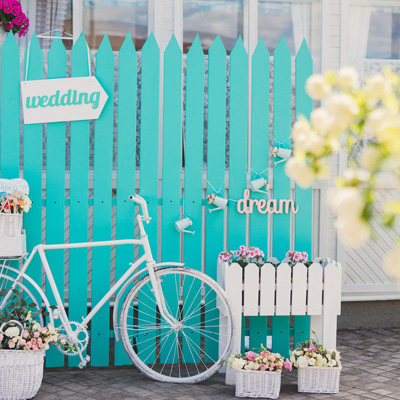 There are so many things to plan for a wedding, especially when you consider that they essentially consist of three entirely different phases – the ceremony, the reception and the honeymoon.
There are so many things to plan for a wedding, especially when you consider that they essentially consist of three entirely different phases – the ceremony, the reception and the honeymoon.
While every wedding service will run to a different schedule, it can be helpful to have a rough outline to use as you’re putting your wedding plans in place.
To help take the pressure off whoever has chosen (or demanded in some cases!) to be your wedding planner, I’ve put together this run-sheet of how a wedding ceremony usually plays out.
As always, keep in mind that I am happy to help plan your wedding ceremony in detail; after all, that is what I’m here for!
A Basic Wedding Ceremony Run Sheet
- 45 Minutes Before Ceremony: Have ushers begin to direct people to their seats, ensuring there is sufficient room at the front for immediate family members who will arrive just before the wedding party. This part of the ceremony will usually be accompanied by music.
- The Processional: The groom and the celebrant are typically the first to stand at the altar. Once they are in place, the immediate family members will walk down the aisle by descending age, before the wedding parties enter. The best man/maid of honour are usually the last to take their place at the altar. The bride is often the last to join, accompanied by her father/mother or both. At same-sex weddings, the couple may choose to enter together.
- Welcoming Address: The celebrant will give you a welcome, which involves a discussion on the reason that everyone has gathered and a brief history of the couple. The welcome speech can be as long or short as the couple like.
- Readings: Readings usually follow immediately after the welcome by the celebrant. Depending on the number of readings, these may be interspersed throughout the ceremony. The readings are generally poems, texts, religious passages or even songs relating to love.
- Vow Exchange: The vows are essentially the central part of the ceremony. Whether they are self-written or traditional, they allow the couple to state to their commitment to each other publicly.
- Exchange of Rings: After the vows are complete, the celebrant will ask the ring bearers to come forward. The celebrant will then prompt the couple to declare a statement of intent as they slip the rings onto each other’s fingers.
- The Kiss: Following the vows and the ring exchange, the celebrant will ask the couple to kiss and seal the union.
- Pronouncement of Marriage: The final official part of the ceremony is when the celebrant announces the marriage of the couple.
- Conclusion: The celebrant may offer a short conclusion, or blessing for the couple. After this, they will be directed to the signing table to sign the Certificate of Marriage. The celebrant will also provide details on the location and time of the reception.
- The Recessional: After everything has been witnessed and signed, the couple will walk back down the aisle where they will be showered with rice, confetti, petals, etc. Guests will then leave the ceremony row by row, starting from the front.
The style of ceremony you have will dictate the order of these events. For example, in a Catholic wedding ceremony, the service is largely composed of biblical readings, psalms and blessings. Other religions will have different stipulations too.
If you opt for a civil wedding celebrant, you’ll have complete freedom over how the ceremony and the day runs.